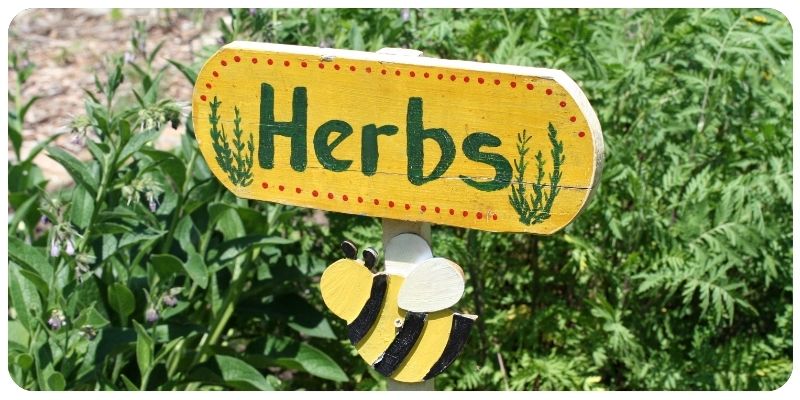
How to Start a Herb Garden Indoors
Starting an indoor herb garden is a fantastic way to have fresh, flavorful herbs at your fingertips year-round. Whether you’re a culinary enthusiast or just looking to add some greenery to your kitchen, growing herbs indoors is a rewarding and practical project. This guide will walk you through everything you need to know to successfully grow herbs inside your home.
1. Choosing the Right Herbs
When starting an indoor herb garden, it’s important to choose herbs that are well-suited for indoor growing. While most herbs can grow indoors, some are more adaptable to lower light conditions and compact spaces. Here are some of the best herbs for indoor gardening:
Best Herbs for Indoor Gardens
- Basil: A versatile herb used in many dishes, basil grows well indoors and can thrive with plenty of sunlight and regular watering.
- Mint: Known for its fast growth, mint is perfect for containers and requires minimal care. Just be sure to keep it well-trimmed.
- Parsley: This biennial herb is easy to grow indoors and adds a fresh flavor to soups, salads, and sauces.
- Thyme: A woody herb that grows well in pots, thyme is ideal for seasoning meats and stews.
- Cilantro: Best grown in cooler indoor environments, cilantro is a must-have for Mexican and Asian cuisines.
- Chives: Chives grow quickly indoors and can be harvested often to add a mild onion flavor to dishes.
2. Selecting the Right Containers
Once you’ve chosen your herbs, it’s time to select the right containers. Proper containers ensure that your herbs have enough space to grow, proper drainage, and room for the roots to expand. Here are some tips for choosing containers for your indoor herb garden:
Container Guidelines
- Drainage Holes: Make sure your containers have drainage holes to prevent water from pooling at the bottom, which can lead to root rot.
- Size: Choose pots that are at least 6-8 inches in diameter to allow room for root growth.
- Material: Terra cotta pots are great for herbs as they allow air to circulate through the soil. Plastic containers also work but may retain more moisture.
3. Best Soil for Indoor Herbs
Herbs need well-draining soil to thrive indoors. Use a high-quality potting mix specifically designed for container gardening. Avoid using garden soil, as it can be too dense for pots and may harbor pests or diseases.
Soil Tips
- Choose a Lightweight Potting Mix: Look for a mix that contains perlite or vermiculite to improve drainage and prevent the soil from becoming compacted.
- Avoid Overwatering: Indoor herbs don’t need to be watered as often as outdoor plants. Water when the top inch of soil feels dry to the touch.
- Add Organic Matter: Mix in some compost or organic matter to enrich the soil with nutrients.
4. Providing Adequate Light
Herbs require a good amount of light to grow well. Most herbs need at least 6 hours of sunlight per day, so placing your containers near a sunny window is ideal. If your home doesn’t receive enough natural light, you can use grow lights to supplement the light requirements.
Lighting Tips
- South-Facing Windows: Place your herbs near a south-facing window to maximize sunlight exposure. If that’s not available, a west-facing window will also work.
- Grow Lights: Use LED or fluorescent grow lights if natural light is limited. Position the light 6-12 inches above the plants and leave it on for 12-16 hours per day.
- Rotate Your Plants: Turn your pots every few days to ensure even growth on all sides of the plant.
5. Watering Your Indoor Herbs
Proper watering is key to keeping your indoor herb garden healthy. Since indoor herbs tend to dry out more slowly than outdoor plants, you’ll need to be mindful of how much and how often you water them.
Watering Tips
- Water When the Soil is Dry: Check the top inch of soil to see if it feels dry before watering. If the soil is still moist, wait another day or two.
- Water at the Base: Always water your herbs at the base, directly onto the soil, to avoid wetting the leaves. Wet leaves can lead to mold or mildew.
- Drain Excess Water: Make sure any excess water drains out of the bottom of the pot. Never let the herbs sit in standing water.
6. Harvesting and Using Your Herbs
One of the most rewarding aspects of growing herbs indoors is being able to harvest fresh herbs whenever you need them. Regular harvesting will also encourage more growth and keep your plants healthy.
Harvesting Tips
- Harvest Early: The best time to harvest herbs is in the morning when the essential oils are most concentrated. Use sharp scissors to snip the stems just above a leaf node.
- Don’t Over-Harvest: Avoid taking more than ⅓ of the plant at a time. This ensures the herb continues to grow and produce new leaves.
- Use Fresh or Dry: You can use your herbs fresh in cooking or dry them for later use by hanging them upside down in a cool, dark place.
Conclusion
Starting an indoor herb garden is a simple and rewarding way to grow your own fresh herbs year-round. By choosing the right herbs, containers, soil, and light, you can create a thriving herb garden that enhances both your cooking and your living space. With just a little care, your indoor herb garden will provide you with fragrant, flavorful herbs for months to come.